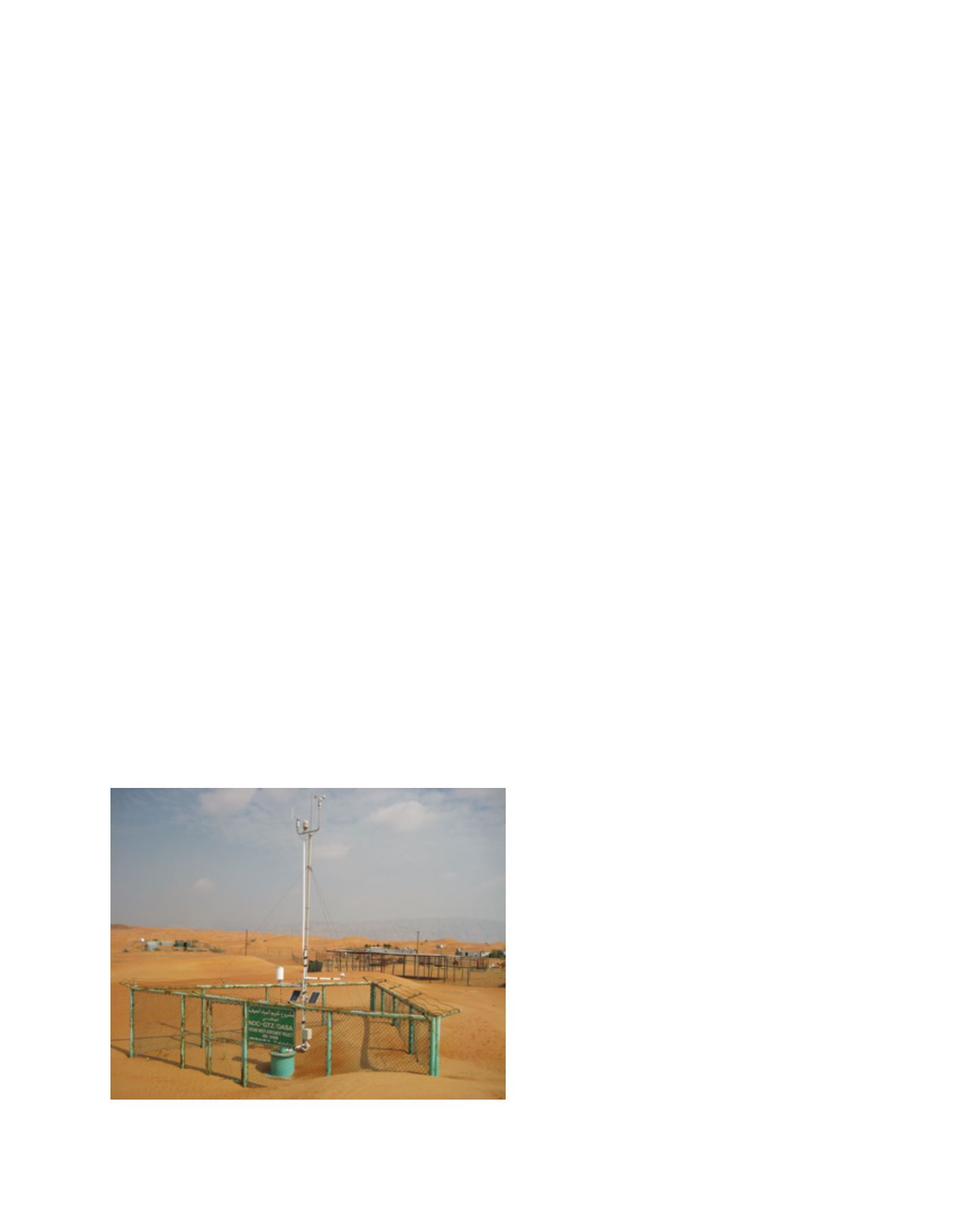

[
] 266
E
conomic
D
evelopment
and
W
ater
This water is used as watering holes for wild animals and
to irrigate natural vegetation to create food and shelter.
These projects provide information about the feasibility
of using renewable energy to supply future water needs.
There is no doubt that managing the demand can be
a more cost-efficient option than managing the supply,
since this will require large infrastructure develop-
ment projects. In recent years, the Government of Abu
Dhabi has attempted to rationalize water consump-
tion through demand-side management initiatives. For
example, in 2011, the ADFSC had the responsibility for
implementing a strategic plan for farmers. The plan aims
to achieve a 40 per cent presence of locally-produced
fruits and vegetables in the markets of the emirate by
2015 (from the current share of about 15 per cent),
and to reduce water consumption by 40 per cent by
2013. These targets will be achieved through providing
agricultural services to the farmers and strengthening
their awareness, as well as helping them marketing
their products. Another initiative, regulation number
7 of 2010, aims to phase out subsidies for the cultiva-
tion of crops with high water consumption, especially
Rhodes grass, which was found to consume more that
59 per cent of water in agriculture. On the other hand,
the ADFSC is working with other entities to introduce
feed that have high tolerance to salinity and drought. It
is also working on rationalizing the use of water irriga-
tion for palm trees, which is the second highest water
consumer at almost 34 per cent of water consumption,
by providing farms with modern irrigation networks.
ADFCA is also looking into the use of recycled water
in agriculture and is currently implementing a project
to irrigate 216 farms with it, as it is used well below its
potential in Abu Dhabi. In 2009, only 55 per cent of
recycled water was used for irrigation, while 45 per cent
was discharged to the Arabian Gulf due to the lack of
proper infrastructure for transmission.
Believing in the importance and the effectiveness of
the integrated work and planning, ADFCA and EAD
have collaborated to set up the Abu Dhabi Protected
Agriculture centre to adopt new technologies and
promote the use of greenhouses and soilless agricul-
ture, which uses 90 per cent less water for the same
volume of crops produced. ADFCA and EAD have also
recently joined forces to develop a high-level strategy
and action plan to balance the needs of agriculture with
water availability.
Overall, it is clear that Abu Dhabi is dealing with
many challenges that are threatening water security in
the country, especially with having groundwater as the
only renewable resource. With these challenges come
many solutions and opportunities to conserve water
resources while supporting food security and economic
development, mainly by improving cooperation between
the different players in the water sector. The growing
collaboration between ADFCA and EAD, in spite of their
different interests, shows the way forward to ensure a
more rational use of this precious resource that is more
important than oil to meet our basic vital needs.
quality of water resources in an economically and environmentally
friendly way. It highlighted the current farming system and how its
role in food security cannot be maintained because at the current rate
of abstraction it is estimated that groundwater will be depleted in 55
years. It also proposed institutional and governance reforms.
In line with the aspirations of the emirate of Abu Dhabi to inte-
grate efforts for the efficient management and conservation of
water resources, a permanent committee for water and agriculture
resources was established by decree number 87 of 24 December
2009. In 2012 the committee approved the creation of a water
council which would be responsible for strategic planning and
development across all the water sources and users. It will play
a regulatory and supervisory role as well as a coordination role
between its member entities to ensure integrated and coherent water
policies in the future. In addition, it will oversee the implementation
of strategies and projects to address existing gaps in the mandate
of entities, and provide the independent guidance and oversight to
come up with the economically best solutions to meet water needs
across the many economic sectors.
Supply-side and demand-side initiatives need to be combined
to be more cost-efficient
Until recently, water policy in Abu Dhabi has been largely based on
infrastructure developments to ensure water supply, water security
and food security. As water scarcity will always be a challenge for the
emirate no matter how well water is managed, the Abu Dhabi Water
and Electricity Authority led a project to create a strategic water
reserve to use in the case of an emergency in cooperation with EAD.
In 2012, 17 billion litres of desalinated water were injected into the
Liwa groundwater aquifer, increasing the capacity to supply Abu
Dhabi’s emergency water needs from 30 to 90 days.
As desalinated water will always play an important role in ensuring
access to water in Abu Dhabi, new clean water generation tech-
nologies will play a major role in the next few decades to address
demand. EAD has initiated the construction of 22 experimental solar
desalination plants that use brackish saline water from groundwater
aquifers and transform it into fresh water through reverse osmosis.
Abu Dhabi groundwater assessment project provided information that was used to
improve the regulatory framework protecting groundwater
Image: EAD


















